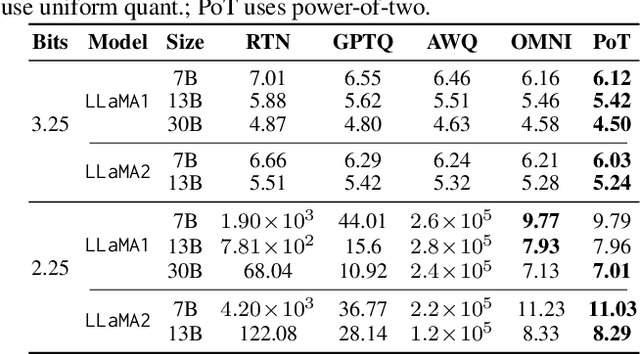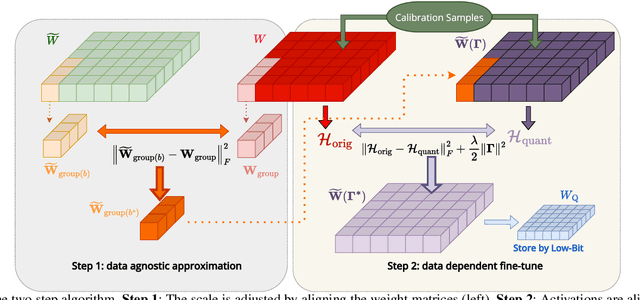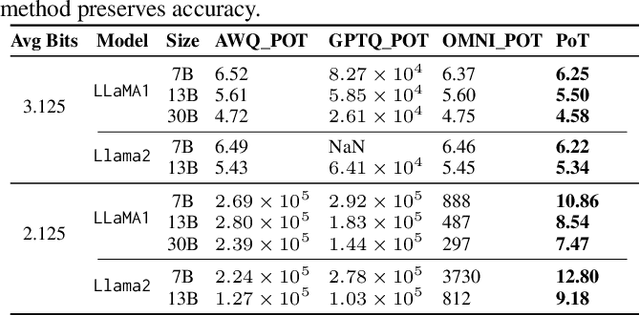Peng Lu
Like Playing a Video Game: Spatial-Temporal Optimization of Foot Trajectories for Controlled Football Kicking in Bipedal Robots
Oct 02, 2025Abstract:Humanoid robot soccer presents several challenges, particularly in maintaining system stability during aggressive kicking motions while achieving precise ball trajectory control. Current solutions, whether traditional position-based control methods or reinforcement learning (RL) approaches, exhibit significant limitations. Model predictive control (MPC) is a prevalent approach for ordinary quadruped and biped robots. While MPC has demonstrated advantages in legged robots, existing studies often oversimplify the leg swing progress, relying merely on simple trajectory interpolation methods. This severely constrains the foot's environmental interaction capability, hindering tasks such as ball kicking. This study innovatively adapts the spatial-temporal trajectory planning method, which has been successful in drone applications, to bipedal robotic systems. The proposed approach autonomously generates foot trajectories that satisfy constraints on target kicking position, velocity, and acceleration while simultaneously optimizing swing phase duration. Experimental results demonstrate that the optimized trajectories closely mimic human kicking behavior, featuring a backswing motion. Simulation and hardware experiments confirm the algorithm's efficiency, with trajectory planning times under 1 ms, and its reliability, achieving nearly 100 % task completion accuracy when the soccer goal is within the range of -90{\deg} to 90{\deg}.
Calibrated Language Models and How to Find Them with Label Smoothing
Aug 01, 2025Abstract:Recent advances in natural language processing (NLP) have opened up greater opportunities to enable fine-tuned large language models (LLMs) to behave as more powerful interactive agents through improved instruction-following ability. However, understanding how this impacts confidence calibration for reliable model output has not been researched in full. In this work, we examine various open-sourced LLMs, identifying significant calibration degradation after instruction tuning in each. Seeking a practical solution, we look towards label smoothing, which has been shown as an effective method to regularize for overconfident predictions but has yet to be widely adopted in the supervised fine-tuning (SFT) of LLMs. We first provide insight as to why label smoothing is sufficient to maintain calibration throughout the SFT process. However, settings remain where the effectiveness of smoothing is severely diminished, in particular the case of large vocabulary LLMs (LV-LLMs). We posit the cause to stem from the ability to become over-confident, which has a direct relationship with the hidden size and vocabulary size, and justify this theoretically and experimentally. Finally, we address an outstanding issue regarding the memory footprint of the cross-entropy loss computation in the label smoothed loss setting, designing a customized kernel to dramatically reduce memory consumption without sacrificing speed or performance in comparison to existing solutions for non-smoothed losses.
PoTPTQ: A Two-step Power-of-Two Post-training for LLMs
Jul 16, 2025



Abstract:Large Language Models (LLMs) have demonstrated remarkable performance across various natural language processing (NLP) tasks. However, their deployment is challenging due to the substantial computational resources required. Power-of-two (PoT) quantization is a general tool to counteract this difficulty. Albeit previous works on PoT quantization can be efficiently dequantized on CPUs using fixed-point addition, it showed less effectiveness on GPUs. The reason is entanglement of the sign bit and sequential bit manipulations needed for dequantization. We propose a novel POT quantization framework for LLM weights that (i) outperforms state-of-the-art accuracy in extremely low-precision number formats, and (ii) enables faster inference through more efficient dequantization. To maintain the accuracy of the quantized model, we introduce a two-step post-training algorithm: (i) initialize the quantization scales with a robust starting point, and (ii) refine these scales using a minimal calibration set. The performance of our PoT post-training algorithm surpasses the current state-of-the-art in integer quantization, particularly at low precisions such as 2- and 3-bit formats. Our PoT quantization accelerates the dequantization step required for the floating point inference and leads to $3.67\times$ speed up on a NVIDIA V100, and $1.63\times$ on a NVIDIA RTX 4090, compared to uniform integer dequantization.
Lasso Gripper: A String Shooting-Retracting Mechanism for Shape-Adaptive Grasping
Jun 17, 2025Abstract:Handling oversized, variable-shaped, or delicate objects in transportation, grasping tasks is extremely challenging, mainly due to the limitations of the gripper's shape and size. This paper proposes a novel gripper, Lasso Gripper. Inspired by traditional tools like the lasso and the uurga, Lasso Gripper captures objects by launching and retracting a string. Contrary to antipodal grippers, which concentrate force on a limited area, Lasso Gripper applies uniform pressure along the length of the string for a more gentle grasp. The gripper is controlled by four motors-two for launching the string inward and two for launching it outward. By adjusting motor speeds, the size of the string loop can be tuned to accommodate objects of varying sizes, eliminating the limitations imposed by the maximum gripper separation distance. To address the issue of string tangling during rapid retraction, a specialized mechanism was incorporated. Additionally, a dynamic model was developed to estimate the string's curve, providing a foundation for the kinematic analysis of the workspace. In grasping experiments, Lasso Gripper, mounted on a robotic arm, successfully captured and transported a range of objects, including bull and horse figures as well as delicate vegetables. The demonstration video is available here: https://youtu.be/PV1J76mNP9Y.
Stroke-based Cyclic Amplifier: Image Super-Resolution at Arbitrary Ultra-Large Scales
Jun 12, 2025Abstract:Prior Arbitrary-Scale Image Super-Resolution (ASISR) methods often experience a significant performance decline when the upsampling factor exceeds the range covered by the training data, introducing substantial blurring. To address this issue, we propose a unified model, Stroke-based Cyclic Amplifier (SbCA), for ultra-large upsampling tasks. The key of SbCA is the stroke vector amplifier, which decomposes the image into a series of strokes represented as vector graphics for magnification. Then, the detail completion module also restores missing details, ensuring high-fidelity image reconstruction. Our cyclic strategy achieves ultra-large upsampling by iteratively refining details with this unified SbCA model, trained only once for all, while keeping sub-scales within the training range. Our approach effectively addresses the distribution drift issue and eliminates artifacts, noise and blurring, producing high-quality, high-resolution super-resolved images. Experimental validations on both synthetic and real-world datasets demonstrate that our approach significantly outperforms existing methods in ultra-large upsampling tasks (e.g. $\times100$), delivering visual quality far superior to state-of-the-art techniques.
HEPP: Hyper-efficient Perception and Planning for High-speed Obstacle Avoidance of UAVs
May 23, 2025Abstract:High-speed obstacle avoidance of uncrewed aerial vehicles (UAVs) in cluttered environments is a significant challenge. Existing UAV planning and obstacle avoidance systems can only fly at moderate speeds or at high speeds over empty or sparse fields. In this article, we propose a hyper-efficient perception and planning system for the high-speed obstacle avoidance of UAVs. The system mainly consists of three modules: 1) A novel incremental robocentric mapping method with distance and gradient information, which takes 89.5% less time compared to existing methods. 2) A novel obstacle-aware topological path search method that generates multiple distinct paths. 3) An adaptive gradient-based high-speed trajectory generation method with a novel time pre-allocation algorithm. With these innovations, the system has an excellent real-time performance with only milliseconds latency in each iteration, taking 79.24% less time than existing methods at high speeds (15 m/s in cluttered environments), allowing UAVs to fly swiftly and avoid obstacles in cluttered environments. The planned trajectory of the UAV is close to the global optimum in both temporal and spatial domains. Finally, extensive validations in both simulation and real-world experiments demonstrate the effectiveness of our proposed system for high-speed navigation in cluttered environments.
FinSage: A Multi-aspect RAG System for Financial Filings Question Answering
Apr 20, 2025Abstract:Leveraging large language models in real-world settings often entails a need to utilize domain-specific data and tools in order to follow the complex regulations that need to be followed for acceptable use. Within financial sectors, modern enterprises increasingly rely on Retrieval-Augmented Generation (RAG) systems to address complex compliance requirements in financial document workflows. However, existing solutions struggle to account for the inherent heterogeneity of data (e.g., text, tables, diagrams) and evolving nature of regulatory standards used in financial filings, leading to compromised accuracy in critical information extraction. We propose the FinSage framework as a solution, utilizing a multi-aspect RAG framework tailored for regulatory compliance analysis in multi-modal financial documents. FinSage introduces three innovative components: (1) a multi-modal pre-processing pipeline that unifies diverse data formats and generates chunk-level metadata summaries, (2) a multi-path sparse-dense retrieval system augmented with query expansion (HyDE) and metadata-aware semantic search, and (3) a domain-specialized re-ranking module fine-tuned via Direct Preference Optimization (DPO) to prioritize compliance-critical content. Extensive experiments demonstrate that FinSage achieves an impressive recall of 92.51% on 75 expert-curated questions derived from surpasses the best baseline method on the FinanceBench question answering datasets by 24.06% in accuracy. Moreover, FinSage has been successfully deployed as financial question-answering agent in online meetings, where it has already served more than 1,200 people.
SuperEIO: Self-Supervised Event Feature Learning for Event Inertial Odometry
Mar 29, 2025Abstract:Event cameras asynchronously output low-latency event streams, promising for state estimation in high-speed motion and challenging lighting conditions. As opposed to frame-based cameras, the motion-dependent nature of event cameras presents persistent challenges in achieving robust event feature detection and matching. In recent years, learning-based approaches have demonstrated superior robustness over traditional handcrafted methods in feature detection and matching, particularly under aggressive motion and HDR scenarios. In this paper, we propose SuperEIO, a novel framework that leverages the learning-based event-only detection and IMU measurements to achieve event-inertial odometry. Our event-only feature detection employs a convolutional neural network under continuous event streams. Moreover, our system adopts the graph neural network to achieve event descriptor matching for loop closure. The proposed system utilizes TensorRT to accelerate the inference speed of deep networks, which ensures low-latency processing and robust real-time operation on resource-limited platforms. Besides, we evaluate our method extensively on multiple public datasets, demonstrating its superior accuracy and robustness compared to other state-of-the-art event-based methods. We have also open-sourced our pipeline to facilitate research in the field: https://github.com/arclab-hku/SuperEIO.
Resona: Improving Context Copying in Linear Recurrence Models with Retrieval
Mar 28, 2025Abstract:Recent shifts in the space of large language model (LLM) research have shown an increasing focus on novel architectures to compete with prototypical Transformer-based models that have long dominated this space. Linear recurrent models have proven to be a viable competitor due to their computational efficiency. However, such models still demonstrate a sizable gap compared to Transformers in terms of in-context learning among other tasks that require recalling information from a context. In this work, we introduce __Resona__, a simple and scalable framework for augmenting linear recurrent models with retrieval. __Resona__~augments models with the ability to integrate retrieved information from the provided input context, enabling tailored behavior to diverse task requirements. Experiments on a variety of linear recurrent models demonstrate that __Resona__-augmented models observe significant performance gains on a variety of synthetic as well as real-world natural language tasks, highlighting its ability to act as a general purpose method to improve the in-context learning and language modeling abilities of linear recurrent LLMs.
Flying in Highly Dynamic Environments with End-to-end Learning Approach
Mar 18, 2025Abstract:Obstacle avoidance for unmanned aerial vehicles like quadrotors is a popular research topic. Most existing research focuses only on static environments, and obstacle avoidance in environments with multiple dynamic obstacles remains challenging. This paper proposes a novel deep-reinforcement learning-based approach for the quadrotors to navigate through highly dynamic environments. We propose a lidar data encoder to extract obstacle information from the massive point cloud data from the lidar. Multi frames of historical scans will be compressed into a 2-dimension obstacle map while maintaining the obstacle features required. An end-to-end deep neural network is trained to extract the kinematics of dynamic and static obstacles from the obstacle map, and it will generate acceleration commands to the quadrotor to control it to avoid these obstacles. Our approach contains perception and navigating functions in a single neural network, which can change from a navigating state into a hovering state without mode switching. We also present simulations and real-world experiments to show the effectiveness of our approach while navigating in highly dynamic cluttered environments.
 Add to Chrome
Add to Chrome Add to Firefox
Add to Firefox Add to Edge
Add to Edge